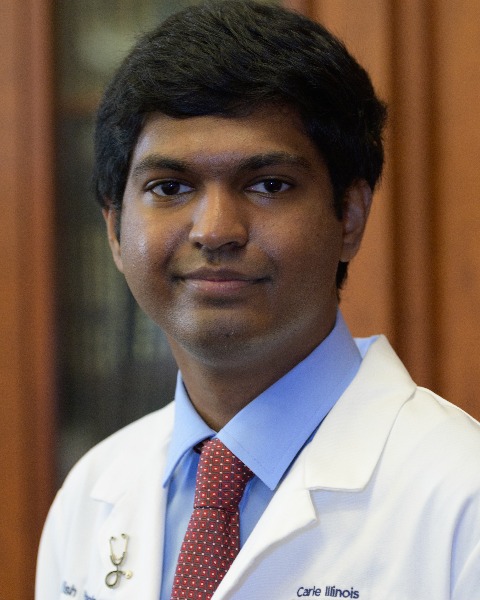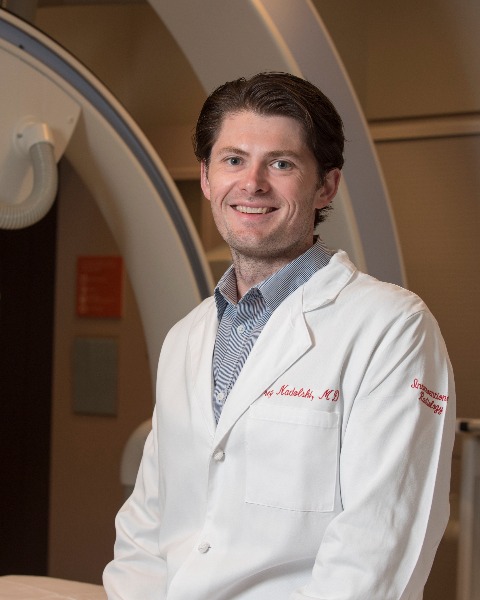Interventional Oncology
Development and characterization of patient-derived rat models of hepatocellular carcinoma for interventional oncology

Vishwaarth Vijayakumar (he/him/his)
Medical Student
Carle Illinois College of Medicine, University of Illinois Urbana-ChampaignDisclosure(s): No financial relationships to disclose
- GM
George McClung, VMD
Research Specialist
University of Pennsylvania - KN
Karan Nagar, BS, MS
Senior Research Assistant
Memorial Sloan Kettering Cancer Center - AI
Ariful Islam, BS, MS
Research Specialist
Penn Medicine 
Gregory J. Nadolski, MD
Attending Physician
Penn Image-Guided Interventions (PIGI) Lab, Hospital of the University of Pennsylvania, Division of Interventional Radiology- SH
Stephen J. Hunt, MD, PhD, FSIR (he/him/his)
Associate Professor
University of Pennsylvania - DA
Daniel Ackerman, PhD
Research Assistant
University of Pennsylvania - TG
Terence P.F. P. Gade, MD, PhD
Assistant Professor of Radiology
Department of Radiology, Hospital of the University of Pennsylvania
Presenting Author(s)
Author/Co-author(s)
Materials and Methods: Ultrasound-guided percutaneous HCC biopsies were implanted heterotopically into the flanks of immunodeficient mice (NSG, Jackson Labs). Mice-bearing tumors reaching >300 mm3 were euthanized and tumors were harvested for analysis and in vivo passaging. After two passages, mice were euthanized and tumor tissue was implanted orthotopically into immunocompromised rats (SRG, Charles River Laboratories) in the left and right medial liver lobes. Two weeks following implantation and weekly thereafter, rats underwent T2-weighted MRI to confirm successful implantation and evaluate tumor size. Blood samples were obtained weekly to quantify serum concentrations of alpha-fetoprotein by ELISA. Once tumors exceeded 300 mm3, rats underwent T1-weighted contrast-enhanced MRI and angiography to evaluate the feasibility of endovascular intervention as described previously {1}{2}{3}.
Results:
Two cohorts (n=4/cohort) of rats were implanted with PDX tissue with each cohort sharing tumor tissue derived from a unique patient. Overall, these models demonstrated a tumor engraftment rate of 87% on a per tumor basis and a 100% engraftment rate on a per rat basis. Average specific tumor growth rates were 15.81 +/- 8.73 mm3/day in the first cohort, and 1.91 +/- 3.36 mm3/day in the second. Serum AFP levels increased consistently by 982 ng/mL/day to 45,954 ng/mL at 68 days post-implantation (n = 3). Dynamic contrast-enhanced T1-weighted MR imaging as well as proper hepatic arteriography via a transfemoral approach in two animals (1 from each cohort) demonstrated hypervascular masses corresponding to the tumors identified on MRI.
Conclusion: Patient-derived orthotopic xenotransplantation can produce a robust rat model of HCC amenable to endovascular locoregional therapy using techniques that mimic clinical protocols. This novel model holds the promise to enable the advancement of tumor-specific treatment strategies in the practice of interventional radiology.

.png)
.jpg)
.png)
.jpg)
.png)
.png)
.png)
.jpg)
.png)